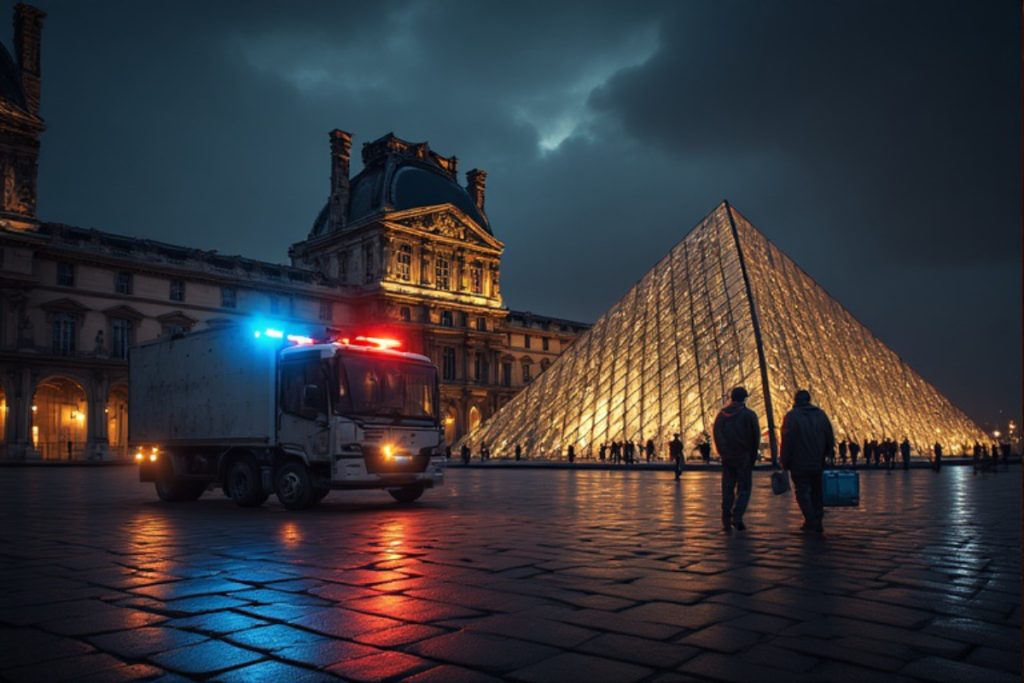
The spectacular theft of the Crown Jewels, which took place at the Louvre on October 19, 2025, hit the global media landscape like a nuclear bomb.
Television channels, radio stations, and newspapers rushed to make it their top story, milking the affair as if it were the plot of a Hollywood action movie.
Endless news reports, heated debates, comedian parodies, and all sorts of wild theories — everything was thrown into the mix: from international organized crime to the usual suspects — the “Russians” (a timeless classic).
A very down-to-earth heist
In reality, however, the truth turned out to be far more mundane: it was simply a case of petty crime — bold, perhaps, but hopelessly ordinary. And it’s not the first time the world’s greatest museum has stirred the greed of a few particularly enterprising scoundrels.
What strikes me — and, I must admit, even fascinates me a little — each time a major theft at the Louvre is revealed, is the sheer simplicity, sometimes even the naivety, of the methods used.
Let’s remember Vincenzo Peruggia, in 1911, sneaking into the museum dressed as an ordinary workman to steal the Mona Lisa in broad daylight. More than a century later, the burglars of 2025 followed the same spirit: a lift truck, a few minutes of distraction, a handful of basic tools… and the priceless jewels vanished into the night.
A royal heist on a shoestring
One would expect, in our age, high-tech wizardry and Hollywood-worthy schemes — a Parisian Ocean’s Eleven, so to speak. But no: disguise, bluff, and almost handcrafted organization still manage to shake the greatest treasures of our heritage.
The thieves don’t hack systems; they hack routine — habits, human complacency.
And that’s precisely what’s so astonishing: how, in the age of smart cameras, surveillance algorithms, and omnipresent digital security, can the world’s most protected masterpieces still fall victim to “tinkerer’s tricks”?
Perhaps it’s exactly this simplicity — this almost innocent daring — that gives such crimes their mythical aura, the kind of legend people keep telling long after the jewels themselves have vanished into thin air.